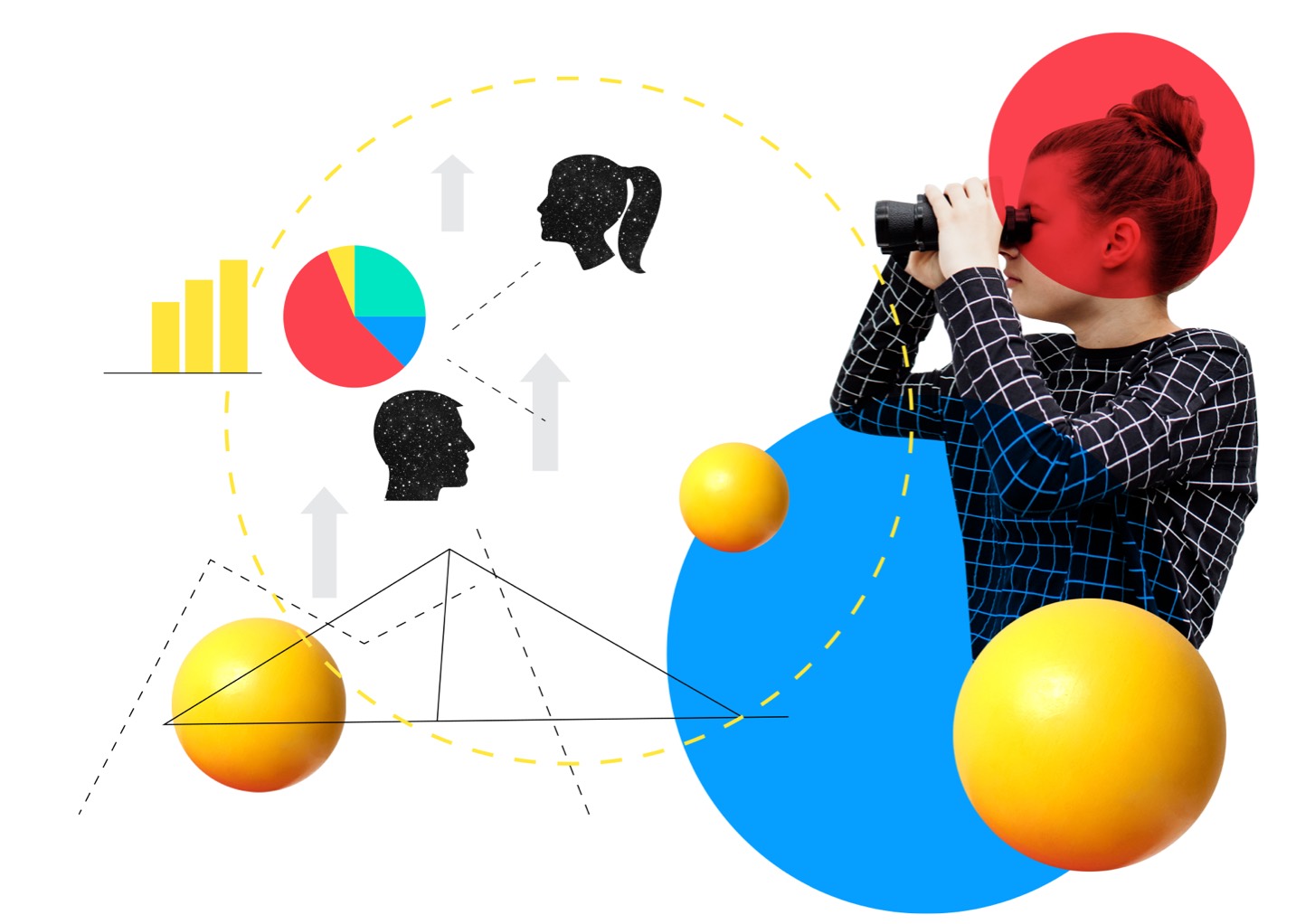What issue can we solve for you?
Type in your prompt above or try one of these suggestions
Suggested Prompt


Telecommunications, Media & Technology
11 Trends Defining Telecommunications, Media and Technology in a Digital World
11 Trends Defining Telecommunications, Media and Technology in a Digital World

For the past three decades, the telecommunications, media and technology (TMT) industries have been at the center of the revolution in how consumers and businesses react, interact and transact with each other and the world. The models of society, work and value creation developed post-World War II and prevalent through the Third Industrial Revolution, are being challenged and replaced by the new models brought forth by the Fourth Industrial Revolution.
In Industry 4.0, traditional manufacturing and industrial practices are being automated. The network replaces the hierarchy, decentralization and autonomy replace centralization and agility and information replaces process and materiel as the source of value creation. As the pace of change only accelerates in this new age, businesses and consumers are both adapting. The introduction of new technologies, the lasting impact of the global pandemic and the change in the dynamics between brands and customers are forcing the companies that make up the TMT industries to seek new ways to create value and attract and retain customers.
Following are 11 trends that TMT organizations need to be focused on not just to reach the full potential of Industry 4.0 but to constantly be prepared for what comes next.

Telecommunications Industry Trends
Trend One
Focus 5G on Businesses, Not Consumers
5G continues to have a lack of compelling use cases for consumers, despite the aggressive marketing done by North American telcos to drive awareness. But in the business world, there are a significant number of compelling use cases that span the needs of small businesses, like managing remote workforces, to enterprise, like industrial manufacturing and automated agriculture. These examples can drive growth and profits for the telcos that can monetize these opportunities. One key use case in the immediate future will be supporting companies as they establish what the future of their work environments will look like. This will help companies determine what the connectivity and technology stacks are to make working in the office and working from home productive and how switching or working in a hybrid environment can be seamless. Another opportunity lies in the re-emergence of small businesses post-pandemic. Small businesses will want more agility and less overhead in their solutions, and 5G-based solutions catering to their specific needs will be a draw for an expected wave of new business customers coming late 2021 and into early 2022.
Trend Two
Two Internets are a Real Possibility
For the past seventy years, the U.S. and western countries have dominated the direction of global standards. From light bulbs to semiconductors, the standards were almost uniformly adopted, and formed the foundations for innovation and interoperability. But now, as technology standards in China and western countries continue to diverge, corporations operating in both markets will need to design for two internets with different data and privacy laws, and standards that are either open or closed. As one example, the United States wrote the standard for 4G. Now China is writing its own standard for 5G, with a multinational partnership creating the 3GPP standard for 5G technologies in parallel (at best) or opposition (more likely). The original intent of 5G was to be a new, open global standard for the internet to connect the world. Although there is a small chance political calculations and U.S.-China relations could radically change, 5G is already dividing nations into pro-U.S. or pro-China factions driven by the need to control national security. Any projections of growth and innovation promised by 5G may be impeded by the U.S.-China dispute.
Trend Three
New Challengers to Big 3 Telcos Emerge
For more than 20 years, the legacy Big 3 U.S. telcos, AT&T, Verizon and T-Mobile, have owned the telecommunications infrastructure we’ve relied on. The Big 3 are increasingly being disrupted by tech companies such as Amazon, Facebook, Google and Space X. The top tech companies already own much of the infrastructure carrying data and content people consume. They’ve started to sell internet access and mobile services while leveraging a combination of public networks and the mobile virtual network operator (MVNO) model. Google Fiber and Space X’s Starlink are only two examples of how Big Tech has the resources to compete long-term. The MVNO model that’s allowing the Big 3 to remain gatekeepers of telco infrastructure isn’t going to remain a digital moat much longer. Rakuten is one company already proving this with a fully cloud-based and fully virtual network architecture as it looks at entering the U.S. market and could compete with extremely competitive price points. Albeit, new regulations and trust busting on Big Tech may temporarily hamper some of these companies and create opportunities for the Big 3. However, emerging technology will continue to increase the pace of disruption among telcos.
Trend Four
Churn and Loyalty in Telco
Major telcos have seen low churn rates so far in 2021, which amplify the impact of add or losses of customers, especially individual post-paid accounts. Retaining customers is key to profitability for telcos as the cost of acquiring customers is about five times the monthly average revenue per customer. Even a one to two percent churn rate costs telcos millions of dollars in revenue. Data is the most important investment telcos can make in limiting churn and growing loyalty. Signals and patterns to predict churn are embedded in both first and third-party customer data, and telcos need to develop AI and big data-driven solutions to proactively identify and handle churn candidates rather than being reactive.
Trend Five
Creating New Revenue Streams via Solutions
Telcos are overly reliant on selling the network -- i.e. voice and data connectivity -- in a North American market that is largely saturated by the Big 3 telcos and growing at roughly the rate of GDP in terms of net new customers. To create new revenue streams, telcos need to create solutions for customers in the form of new service offerings or the monetization of existing assets. For consumers, data, home security and family management are important. For small businesses, the lifecycle of startup, running a business and scaling are key opportunities for telcos to provide services and solutions. For enterprise businesses, the ability of 5G to support low latency and thousands of devices with mission-critical resiliency with the use of data and automation opens exciting new possibilities in verticals such as energy, manufacturing, and agriculture. Telcos should be reaching out to partners across verticals to explore what Industry 4.0 will look like as cloud storage, cloud compute and connectivity come together.
Read more: How Connectivity Providers Can Fast Track Digital Customer Experiences

Trend Six
Technology-as-a-Service as a New Business Model for Consumer Tech
The $415 billion global e-commerce market for consumer electronics encompasses a range of products, from radios to TV sets to smartphones and laptops. With nearly two billion consumers buying at least one product in 2021, e-commerce has surged in importance to consumer electronic brands, with added impetus from the COVID-19 pandemic and the resulting changes in consumer behavior and demand. Organizations that are able to increase revenues and margins from this growth are those that create relationships with their customers beyond the point of transaction. Brands who succeed will create experiences, products and services based on solving customers' problems and build an ecosystem to continuously adapt and anticipate user needs. That’s why a new model for consumer technology companies is necessary to connect with and retain their customers. This direct-to-consumer model -- Technology as a Service (TaaS) --resembles the subscription services taking root in other industries such as consumer packaged goods, where customers pay a monthly fee for turnkey services with products that are regularly refreshed or upgraded. TaaS extends the traditional subscription service by going beyond product into content and services that create engagement and loyalty.
Read more: Why Subscriptions Are What Gamers Are Craving Next
Trend Seven
Chip Designers Don’t Need to be Chip Makers
The worldwide shortage of chips due to a drought in Taiwan and spike in demand during the pandemic have revealed a major challenge with the semiconductor supply chain and the reliance of many downfield players on a few bottlenecks. With companies anticipating that the shortage will last a few years, the major industry players are faced with the decision: either make their own chips or someone else’s. These are very different business models. Going fabless - how some companies design microchips but contract out their production rather than owning their own factories - is higher margin, but leaves the designer reliant on manufacturers. By contrast, being a contract manufacturer is a commodity business with lower margins, albeit one in high demand right now. The largest chip companies both design and make chips but as chips become smaller and more complex, the investment in fabrication comes at the expense of research and development. Going fabless enables focus on growth areas—graphics processing units for AI-driven cloud-based data centers and mobile device processors – and more focus on innovation. Open innovation allows for greater partnership between organizations, and this complementary approach allows for leapfrogging innovation with higher agility, rather than just incremental innovation.
Trend Eight
Even More Connected Lives Mean Even More Data Concerns
The Halo fitness tracker is a recent example from Amazon on how connected our lives have become. Halo processes the wearer’s tone of voice and Amazon claims “to help users communicate more thoughtfully with family, friends and colleagues.” It also scans body fat. However, with more devices in more contexts connecting us and tracking every action—then control and portability of the data will need to be resolved. Google, Amazon, Facebook, Apple are not only enablers of these connected lives, they are among the largest holders of customer data. These tech giants are approaching monetizing and protecting that data differently as consumers become more aware about how much data is being collected. Regulations, privacy rules and business models have yet to catch up to handle the accompanying data, whether transactional, electronic health records or behavioral tracking. Two trends that companies should be exploring immediately are 1) data trusts, or a structure where data is placed under the control of a board of trustees with a fiduciary responsibility to look after the interests of the beneficiaries and 2) data wallets, where users can manage data through a trusted, independent party and then give companies permission to access specific data under certain guidelines including duration, use and value exchange parameters. As consumers assert control over their data and data rights, organizations at all levels need to explore how they will be compliant with regulations and, more importantly, earn and keep the trust of consumers.
Trend Nine
Big AI May Not Need Big Data
Much of the artificial intelligence/machine learning conversations to date have focused on the need for access to huge amounts of data to feed algorithms and neural networks, an area dominated by companies such as Google, Amazon, Microsoft, and Facebook, or the Chinese mega-tech companies, Baidu, Alibaba, and Tencent. But recent advances in machine learning, including “less than one”-shot learning where ML algorithms can learn information about something from one or only a few training samples or images. This example indicates that certain key ML capabilities may be achievable without needing large amounts of customer data. A recent MIT example using these techniques reduced the training set of images needed to identify handwritten numbers from 60,000 to 10. This puts complex AI-driven solutions that rely on supervised learning, like natural language processing and image recognition, within the reach of start-ups and smaller companies which should lead to accelerated innovation. Companies should start examining use cases that may have once been out of reach and determining if new techniques like one-shot learning could work and create value.
Trend Ten
Ambient Technology Takes Over the Next Wave of Experiences
Ambient intelligence allows technologies to act on user’s behalf, without a user giving a direct command. Popular devices like Amazon’s Alexa have laid the ground work for this technology and many customers are already comfortable with smart devices completing household tasks. As more consumer technologies remain connected in a passive listening mode, some are experimenting with acting based on consumer preferences or on preset automation workflows. An example would be a connected coffee maker turning on at the beginning of a workday when being notified by your IoT-enabled hot water pump that the shower just turned off. Although data privacy concerns are abundant in many of these scenarios, with the right privacy and security measures in place consumers will become more comfortable with devices sharing data and streamlining many tasks in the background. Home automation, workplace safety and automotive and retail could all be impacted as ambient technology becomes embedded in consumers’ lives making for higher degrees of personalization and more frictionless experiences. Brands need to prepare for ambient technology as the next evolution of experience interactions that follow in the footsteps of desktop browsers and mobile apps.

Trend Eleven
Finding Streaming Flywheels
Successful media brands in the twenty-first century must have a streaming-first mindset. Media companies’ catalogs are the asset but many aren’t distributing and monetizing effectively. Disney’s content-driven flywheel has always been linked to its merchandizing, experiences and parks ecosystem, allowing it to monetize Marvel, Star Wars, or Pixar content well beyond the price of a single viewing, but other players are floundering. Digital experiences from rich content libraries is one area for media brands to start their flywheel innovation. Media companies need to start paying attention to things such as experience enhancements like shared streaming, deeper personalization and ending endless scroll by using artificial intelligence and machine learning. Companies must be conscious of not ending up where this all started: expensive bundles, too many options, low viewer satisfaction and customer fatigue. The winner will be whoever can keep subscribers engaged and coming back not just for the content but for the experience.
Work With Us
What's Next for Your Business? We're Here to Help you Acheive It.
Related Content

Video
Waiting for 5G? What Your Business Can Do Now
5G is real – but, it will still be some time before it is fully functional. 5G has bigger implications for businesses than it does for consumers.




